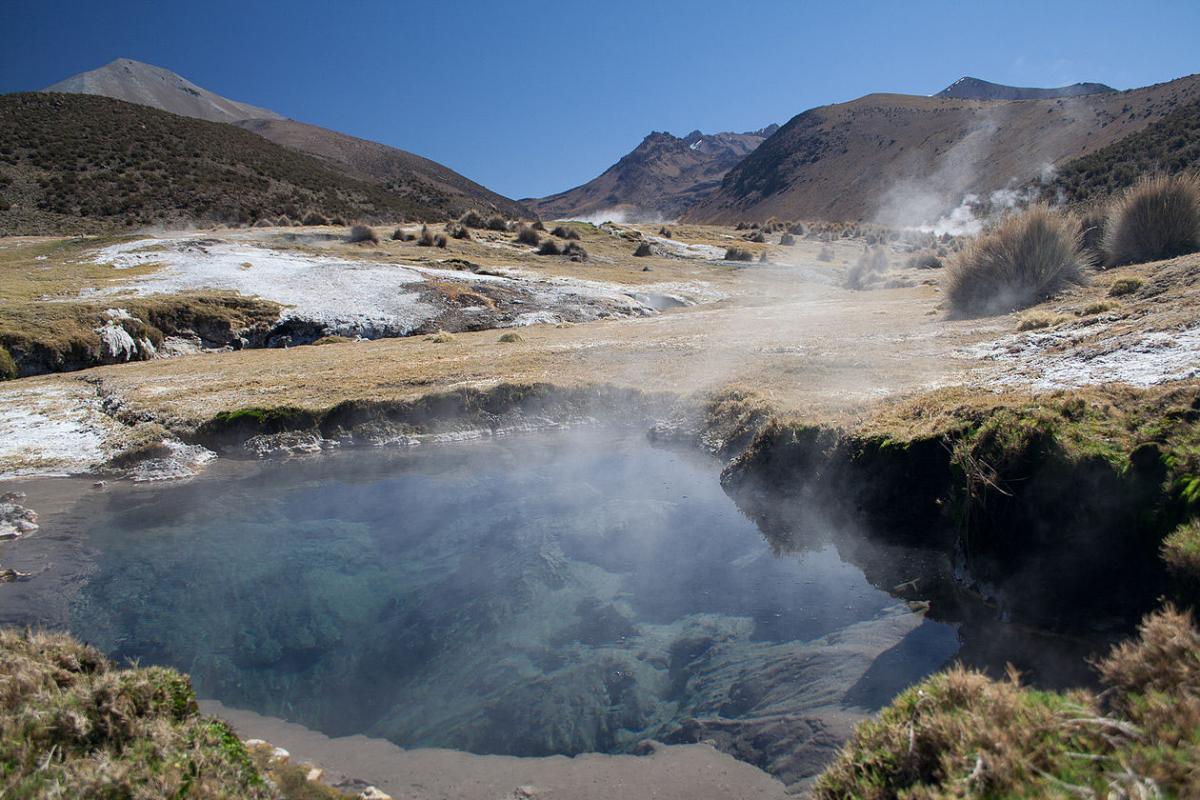D: Yaël, the origin of life is an unsolved scientific mystery.
Y: Don, some researchers think life might have started at hot springs on the early Earth. These are places where geothermally heated water rises from the ground.
D: But Yaël, hot springs are inhospitable environments. The water is acidic, and as hot as one hundred and seventy degrees Fahrenheit.
Y: That may seem hostile to us, but some bacteria thrive in modern hot springs. They form multilayered mats that accumulate mineral grains to form distinctive structures called stromatolites. Fossil stromatolites are as much as three and a half billion years old and provide some of the earliest evidence of life on Earth. In twenty-twenty, two California astrobiologists published their theory that life originated at hot springs.
D: How could that work?
Y: Modern hot springs accumulate many of the elements needed as the building blocks of life.
D: There’s a lot more to making life than just accumulating the needed chemicals.
Y: The molecular working parts of living things are complex organic molecules with a backbone of carbon atoms. The researchers argue that hot springs might have provided the special chemical environments needed to link simple molecules up to form these longer and more complicated molecules. Experiments in the lab, and the field, show that when simple organic molecules experience repeated cycles of wetting and drying, in the hot water at the edges of hot spring pools, they will join together to form more complicated polymers. Tiny bubble-like pockets of lipids can also form, like the membranes that protect modern cells. These blobs of chemicals surrounded by membranes might have been the precursors of the first living cells.










